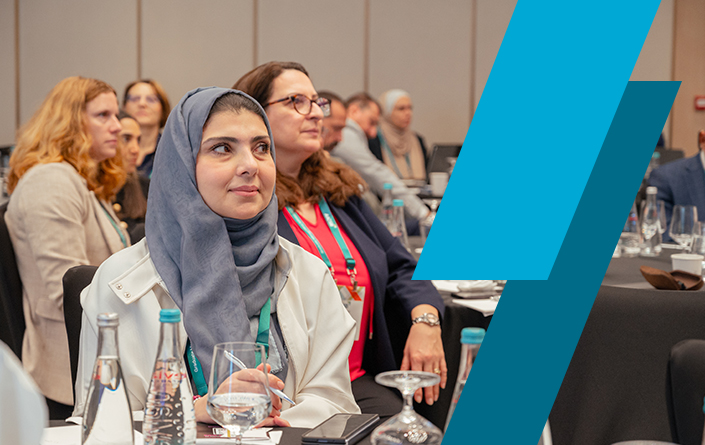Impact Criteria for Faculty Career Development
- Business faculty often find their schools’ expectations for societal impact unclear, especially in relation to their intellectual contributions.
- Guided by AACSB accreditation standards, Aalborg University Business School adopted more comprehensive faculty development strategies to generate impact in four areas: academic, educational, business, and public.
- The success of this strategy rests on taking three steps: clarifying criteria for promotion and tenure, adopting data collection systems, and assigning staff managers to support faculty’s impact activities.
Business schools have been increasingly expected to demonstrate tangible societal impact. It’s clear that schools can achieve positive impact by educating their students in principles such as leadership, strategy, and business ethics. But to truly make a positive difference in the world, we also must foster research that contributes to economic, environmental, and societal development.
One of the most effective ways that schools can achieve this goal is by closely aligning their faculty’s career development with the requirements of societal impact. Unfortunately, faculty often remain unclear about their institutions’ impact-focused goals and requirements that relate not only to teaching and project management, but also to publishing, disseminating, and securing funding for their research. Even after professors achieve tenure, they are likely to find it difficult to discern how they can most effectively contribute to the broader purpose of their business schools while advancing their academic careers.
As we worked toward initial AACSB accreditation at Aalborg University Business School (AAUBS) in Denmark, the challenge of aligning societal impact with faculty development was a recurring theme. But we soon realized that we could achieve our impact ambitions if we aligned our faculty development with the AACSB Business Accreditation Standards.
For this strategy to be successful, we knew that we needed to take three essential steps: clarify our criteria for faculty promotion and tenure, be disciplined about gathering and analyzing data regarding the impact of faculty research, and assign staff managers to support faculty as they pursue impact-focused scholarship.
Connecting Impact With Intellectual Contributions
Given that societal impact is a fundamental pillar of AACSB accreditation, we could leverage our accreditation activities as a foundation for impact. For instance, AACSB accreditation Standards 8 and 9 focus on establishing a framework for assessing impact that is closely aligned with an institution’s mission, vision, and expectations regarding thought leadership, as described in Standard 1. While the interlinking of Standards 1, 8, and 9 is evident, we discovered additional value in connecting our activities directly to the assessment of faculty classifications, as outlined in Standard 3.
One of the most effective ways that schools can make a positive difference in the world is by closely aligning their faculty’s career development with the requirements of societal impact.
Traditionally, academic peer-reviewed publications have served as the primary metric for faculty classifications. For faculty to maintain their classification as Scholarly Academics under the AACSB standards, they must produce a certain number of publications within a set number of years. However, once we integrated our expectations for societal impact into the faculty classification process, we strengthened the connection between the accreditation standards and the narrative of our impact-driven business school.
We were also helped by the fact that Standards 8 and 9 take a holistic approach that supports the evolution of purpose-led business schools. The AACSB accreditation standards offer individual schools the flexibility to tailor their faculty portfolios and associated measures to their unique missions. Unlike the more standardized structures of other impact rankings, the flexibility of Standards 8 and 9 enables business schools to demonstrate how they create impact along several dimensions.
Four Dimensions of Impact
As we delved into the interplay between Standards 1, 8, and 9, we asked our seven research groups to outline group-based research strategies that align with the overarching business school mission and vision.
The groups drafted their research strategies in 2022. However, as they completed this undertaking, it became evident that we needed to be much clearer about how we would integrate societal impact at the levels of the business school, research groups, and individual researchers.
Furthermore, many research groups highlighted that academic impact is merely one aspect of a modern business school’s focus, which underscored the need to consider broader strategic priorities. Ultimately, we identified the four dimensions of our school’s impact: academic, educational, business, and public.
We then outlined how each dimension uniquely contributes to our strategic objectives:
- Academic Impact (AI) produces internationally recognized and often interdisciplinary research on contemporary issues that push the boundaries of knowledge toward new and enhanced business practices.
- Educational Impact (EI) transforms students into lifelong learners through problem-based learning that teaches fundamental and advanced economics and business knowledge in interdisciplinary contexts.
- Business Impact (BI) turns our school into a regional hub of knowledge that facilitates learning and the exchange of ideas with private, public, and third-sector organizations through cooperation and networks, while exposing students to international perspectives.
- Public Impact (PI) allows us to be recognized as a business school that has societal relevance and that is engaged in broader public debate, as well as national and international policy development.

To construct a clearer and more comprehensive faculty development strategy, we needed to integrate all four areas of impact into the business school’s requirements for faculty intellectual contributions.
Enhancing Impact Through Faculty Classification
After we identified our dimensions of impact, we delineated the four areas into 24 subcategories, each reflecting different dimensions of scholarly excellence (see table below). This categorization offers a nuanced understanding of faculty’s collective contributions across academic, educational, business, and public dimensions.
| ACADEMIC IMPACT | BUSINESS IMPACT |
|
|
| EDUCATIONAL IMPACT | PUBLIC IMPACT |
|
|
Next, we classified all activities into these subcategories documented by faculty members in PURE, our school’s research management system. This research portal serves as a full-text repository, a platform for research dissemination, and a collaborative showcase for faculty activities on local, national, and international levels.
In practice, this categorization requires that faculty members at least annually update their contributions to impact in PURE to maintain their faculty classification for AACSB accreditation. With our expanded focus on impact, our qualification criteria now extend beyond targets for research published in recognized peer-reviewed journals. The criteria also mandate that faculty make a specific number of additional intellectual contributions within the 24 subcategories to underscore the diverse nature of the school’s overall impact.
At the business school level, metrics based on intellectual contributions are integral to the school’s annual strategic assessment. These metrics help in continually refining the university’s target agreement, for which the business school must specify the impact targets it aims to achieve in the upcoming period.
On an individual level, the registrations of intellectual contributions form the basis of the annual development dialogues between employees and staff managers. During these meetings, staff managers engage in constructive dialogues with faculty members about their contributions, identify areas of strength, and pinpoint opportunities for improvement that are aligned with each academic’s career progression aspirations.
The data drawn from the research management system provides a comprehensive view of our faculty members’ work. We can determine if they have met the minimum requirement of academic peer-reviewed publications to retain their status as Scholarly Academics and create impact profiles for each professor.
We can illustrate this process by examining the impact profiles of three hypothetical faculty members. For example, the data might show that, over the last year, Professor A earned 150 citations in the press, published in 3 practitioner- or industry-focused outlets, and consulted with companies (categories 24, 17, and 18). Professor B disseminated research via 15 webinars and podcasts, received external research funding, and taught courses at an international university (categories 13, 4, and 14). Professor C has published several articles in peer-reviewed journals, organized two conferences, and served on a company’s advisory board (categories 1, 11, and 19).
Our staff managers will take different approaches to professional development, depending on the impact profile reflected in each professor’s intellectual contribution portfolio:
- Given Professor A’s focus on business and public impact, the staff manager might encourage her to promote her expertise to a larger audience via participation in expert groups and committees, or even position her to act as a public representative of the school.
- Because of Professor B’s focus on educational and academic impact, his staff manager might suggest that he better balance his external teaching with internal responsibilities, while offering him greater administrative support to develop new project proposals.
- Inspired by Professor C’s more traditional intellectual profile, based on academic and business impact, her staff manager might suggest that she leverage her advisory board involvement to attract more external funding, which she might use to create a more specialized research environment within the business school.
These examples illustrate how business schools can use impact profiles to design personalized development plans, ensuring that faculty members continue to grow in areas that align with both their individual strengths and the school’s efforts to generate broader societal impact.
Three Steps to Drive Faculty Impact
When more closely linking societal impact and faculty career development, business schools should consider addressing three important areas of their promotion and tenure processes:
Clarity of promotion criteria and faculty requirements. In academia, conducting research is often a solo endeavor, with no precise output measures or defined requirements. But a lack of specificity regarding promotion criteria and expectations for impact reduces transparency and hinders the advancement of a school’s impact-focused mission.
By leveraging accreditation activities to set clear criteria and requirements, schools can support individual researchers in their career advancement in ways that align with larger institutional objectives.
It is essential that business schools implement research management systems that facilitate easy documentation of impact-related activities.
Disciplined recording of data relating to impact. To enable the school to measure the full range of faculty’s impact-related intellectual contributions, professors will need to consistently submit their individual data to the school’s tracking system. While many researchers are used to reporting their journal publications and books, they may overlook the importance of registering these and other activities with societal impact in mind.
For that reason, it is essential that business schools implement research management systems that facilitate easy documentation of these efforts and promote impact-oriented outcomes.
Ongoing faculty development support. Based on insights gleaned from our research management system, we know that staff managers provide valuable personalized support that nurtures the development of individual researchers. This approach mirrors the employee development programs at industrial organizations, where managers foster the professional progress of employees.
Staff managers do not just offer a more comprehensive view of our faculty’s job performance. They also cultivate the leadership potential of professors who are proficient in different forms of impact.
By integrating aspirations for societal impact into faculty development, we can achieve three critical goals: living up to the accreditation requirements, supporting faculty as they pursue their chosen career paths, and ensuring that the business school makes a positive difference in society.






